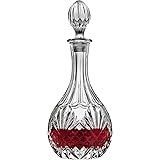Debunking the Beer Myth: Understanding Alcohol’s True Effects
It is often observed that a significant number of individuals harbor misconceptions regarding alcohol consumption, particularly concerning beer. As highlighted in the insightful video above, a prominent myth suggests that beer, due to its comparatively lower alcohol percentage, might inflict less harm on the body. This perception, however, is a widespread misunderstanding that warrants closer examination, as the body’s processing of alcohol is far more uniform than commonly believed. Our physical systems are designed to metabolize ethanol, the intoxicating agent in all alcoholic beverages, in a consistent manner, irrespective of the drink’s type or perceived strength. This article aims to elaborate on these crucial points, shedding light on the universal effects of alcohol consumption and the specific considerations pertaining to beer.
1. The Universal Truth of Alcohol Metabolism: Beyond the Beverage Type
Firstly, a fundamental principle of human physiology dictates that the body processes alcohol (ethanol) in a largely identical fashion, whether it originates from a pint of beer, a glass of wine, or a shot of spirits. Once ingested, alcohol is primarily metabolized by the liver, where specific enzymes, such as alcohol dehydrogenase (ADH), break it down into acetaldehyde, a highly toxic compound. This compound is then further processed into acetate, which is eventually eliminated from the body. The speed at which this process occurs is primarily determined by individual factors like body weight, gender, genetic predispositions, and liver health, rather than the type of alcoholic drink consumed.
Therefore, the notion that beer, with its typically lower alcohol by volume (ABV) content compared to spirits, poses a lesser threat is inherently flawed. While a single serving of beer might contain less ethanol than a single shot of vodka, the cumulative effect of consuming multiple beers to achieve a desired state of relaxation or confidence can quickly equalize, or even surpass, the ethanol intake from other beverages. It is the total amount of pure alcohol consumed, rather than the specific drink form, that dictates the metabolic burden placed upon the liver and the overall impact on health. This critical distinction is often overlooked, leading to potentially harmful consumption patterns.
2. The Caloric Conundrum: Weight Gain and Beer Consumption
Secondly, a significant aspect touched upon in the video relates to the caloric intake associated with beer, particularly when consumed in large quantities. Beer, being a fermented grain beverage, often contains a notable amount of carbohydrates in addition to its alcohol content. For example, a standard pint of lager can contain upwards of 150-200 calories, and some craft beers can exceed 300 calories per serving. When individuals consume multiple beers to feel the desired effects, the cumulative caloric intake can become substantial, sometimes adding hundreds or even thousands of ’empty’ calories to their daily diet without providing significant nutritional value.
This excessive calorie intake directly contributes to weight gain, particularly around the abdominal area, leading to the well-known “beer belly.” Unlike calories derived from nutrient-rich foods, alcohol-derived calories are prioritized for metabolism by the liver, meaning that other metabolic processes, including fat burning, can be temporarily suppressed. Over time, this consistent intake of surplus calories, coupled with altered fat metabolism, significantly increases the risk of obesity, which in turn elevates the likelihood of developing various chronic health conditions. Understanding this direct link between beer consumption and caloric load is crucial for those managing their weight or seeking a healthier lifestyle.
3. Beyond Calories: Broader Health Complications of Alcohol Consumption
Thirdly, the health implications of frequent or heavy alcohol consumption extend far beyond mere caloric excess and potential weight gain. The video briefly mentions “other health complications,” and it is imperative to delve deeper into these serious risks. Prolonged exposure to alcohol and its toxic metabolite, acetaldehyde, can cause extensive damage to various organ systems throughout the body. The liver, as the primary site of alcohol metabolism, is particularly vulnerable, with risks including fatty liver disease, alcoholic hepatitis, and ultimately, irreversible cirrhosis. These conditions can severely impair liver function, leading to a host of systemic problems and, in severe cases, liver failure.
Moreover, the cardiovascular system can be adversely affected, with chronic heavy drinking contributing to high blood pressure (hypertension), an increased risk of stroke, and certain types of cardiomyopathy, where the heart muscle becomes weakened and enlarged. The immune system is also compromised, making individuals more susceptible to infections and slowing down recovery times. Mental health can suffer significantly, with alcohol often exacerbating existing conditions such as depression and anxiety, and in some cases, leading to alcohol dependence and addiction. Digestive health can be impaired, manifesting as gastritis, pancreatitis, and an increased risk of certain cancers, including those of the mouth, throat, esophagus, and liver. These extensive health risks underscore the importance of understanding the comprehensive impact of alcohol on the human body, irrespective of the beverage choice.
4. Exploring the Psychological & Social Aspects of Alcohol Consumption
Fourthly, the video touches upon the psychological motivations behind alcohol consumption, such as celebrating occasions, seeking relaxation, experiencing pleasure, or temporarily boosting confidence. These are powerful drivers, and the transient effects of alcohol can indeed provide a sense of euphoria or disinhibition. For many, a small amount of alcohol can lower social anxieties and facilitate communication in social settings, creating a feeling of ease and confidence. The perceived ability of alcohol to “take the edge off” or “loosen up” is a significant factor in its widespread use across cultures and social contexts.
However, it is crucial to recognize that these effects are often temporary and can lead to a cycle of dependence. Relying on alcohol for relaxation or confidence can prevent the development of healthier coping mechanisms and genuine self-assurance. As tolerance develops, increasing amounts may be required to achieve the same desired effects, incrementally escalating consumption and its associated health risks. The fleeting nature of these psychological benefits often masks the long-term detriments, creating a complex interplay between social enjoyment and potential health hazards. Understanding these underlying motivations is a key step towards making more informed decisions about alcohol consumption.
5. Understanding Standard Drinks and Practicing Moderation
Fifthly, to navigate the complexities of alcohol consumption responsibly, it is beneficial to understand the concept of a “standard drink.” This standardized measure allows for a more accurate comparison of alcohol intake across different types of beverages. In many regions, a standard drink contains approximately 10-14 grams (or 0.5-0.6 fluid ounces) of pure ethanol. For example, a typical standard drink might be a 12-ounce (355 ml) regular beer (around 5% ABV), a 5-ounce (148 ml) glass of wine (around 12% ABV), or a 1.5-ounce (44 ml) shot of distilled spirits (around 40% ABV). It is apparent that even with a lower ABV, the larger serving size of beer means one pint can often equate to more than one standard drink.
Guidelines for moderate alcohol consumption are typically defined by health organizations, often suggesting limits such as up to one standard drink per day for women and up to two standard drinks per day for men. These guidelines are not intended as an encouragement to drink, but rather as a framework for those who choose to consume alcohol, aiming to minimize potential harm. Adhering to these limits, being mindful of drink sizes, and incorporating alcohol-free days are practical strategies for practicing moderation. It is widely recommended that alcohol consumption should be an informed choice, always prioritized by individual health considerations and never used as a substitute for healthy coping mechanisms or genuine relaxation.
Ultimately, the enduring myth that beer is somehow ‘safer’ or less detrimental than other alcoholic beverages is effectively dispelled upon a closer look at how alcohol is processed by the body. The total quantity of ethanol consumed dictates the health impact, not the specific drink itself. High caloric content, coupled with a propensity for overconsumption to achieve desired effects, can lead to significant weight gain and a myriad of other health complications. Understanding the universal effects of alcohol consumption and embracing moderation are critical steps toward protecting one’s health and well-being.







